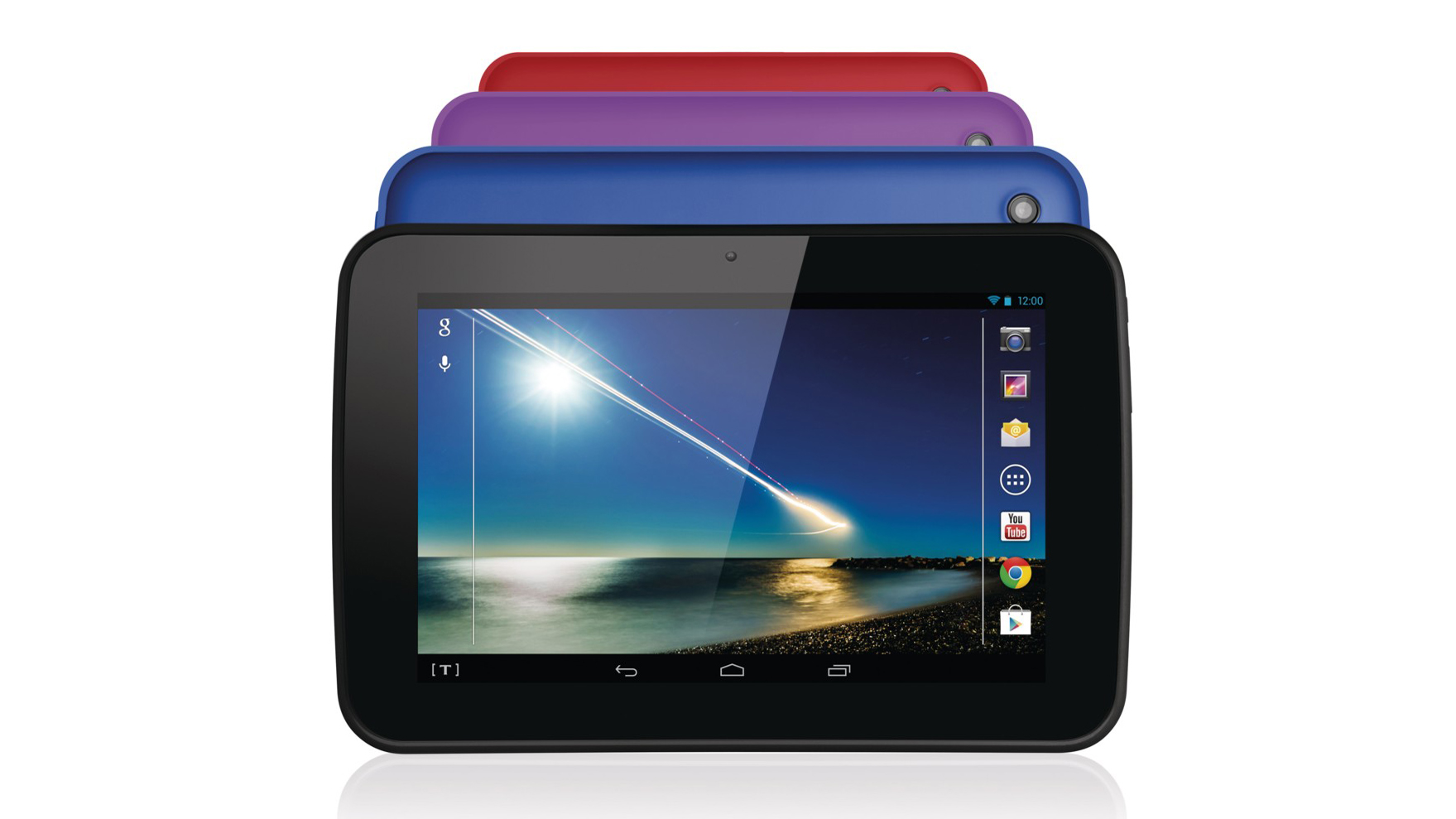Why you can trust TechRadar
With Android 4.2.2 Jelly Bean powering it, the Tesco Hudl can't claim to be on the very latest version of Google's ubiquitous mobile OS, but it's still pretty current.
Besides its lack of fundamental improvements, we're not inclined to complain at the lack of Android 4.3 here for one very good reason. The Hudl is one of very few non-Nexus tablets to run on (almost) stock Android.
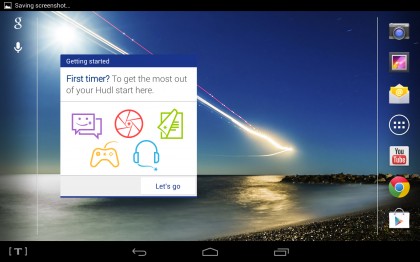
But for one incredibly minor interface tweak and some additional Tesco themed widgets (which can be removed), this is Android as Google envisaged it, which instantly gives it a usability advantage over rival offerings from Samsung, Acer, and Amazon.
We've discussed the Android OS in depth on numerous occasions, including our Nexus 7 review, so let's provide a brief recap. Android in 2013 is a thoroughly modern mobile operating system that deserves its place alongside iOS at the very top of the market.
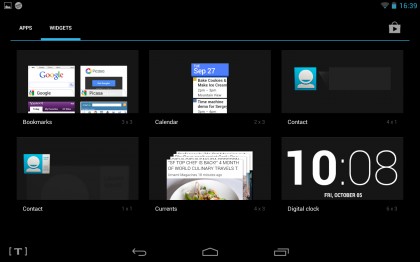
It's slick, intuitive, reliable, stylish without being garish (hello, iOS 7) and eminently customisable. The latter is especially evident in Android's deployment of widgets.
These expanded (and resizable) app icons contain real time information related to their apps, so you can skim your latest emails, appointments or notes (to name but three of Google's own examples) directly from any of the five homescreens.
If you've only ever used pure Android on a smartphone before then you'll find that there are now two menu bars you can pull down from the top of the screen. Start from the top left and you'll get your usual notification tray, which populates with emails, app update notifications, Google Now card information and more in real time. These can be dismissed with a simple swipe.
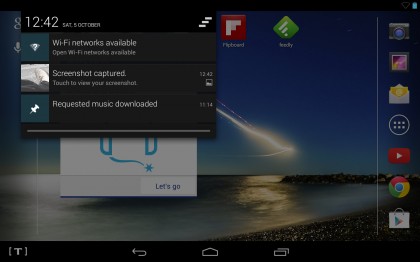
Pull down from the top right, however, and you'll get a settings shortcut menu containing toggles for Wi-Fi, Bluetooth, screen brightness and the like. On smartphones this requires an additional press from the notification menu, so it's a welcome use of the extra screen space here.
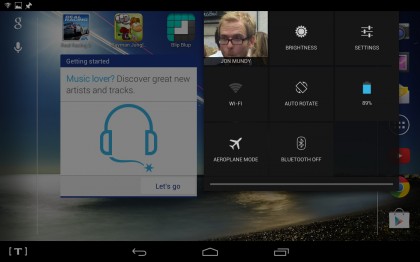
The only minor way in which Tesco has tinkered with the fabric of this Android 4.2.2 interface, as hinted at above, is by adding a dedicated Tesco button at the bottom left of the screen, adjacent to the virtual back-up button.
This simply opens up an light app containing shortcuts to a number of Tesco services. From here you can shop for groceries, search for recipes, check your Clubcard status, jump to your Blinkbox movie or music account, access your Tesco Bank account and more.
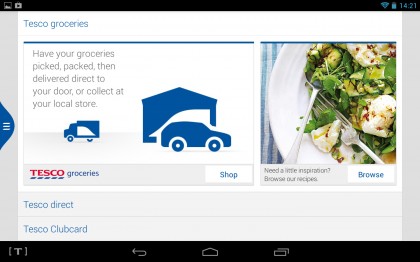
There are also a couple of widgets spread across the homescreens that grant even more direct access to your Blinkbox Movies and Blinkbox Music accounts, both of which we'll discuss later.
There are also dedicated widgets for your Clubcard account, Tesco's online shopping facility and the Tesco direct catalogue service - which smartly pushes Hudl accessories to the fore.
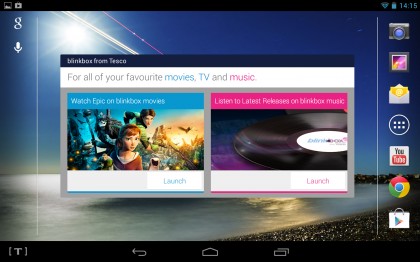
In truth, none of this is anything you couldn't easily do on any other tablet you care to mention through Tesco's assorted apps and mobile-optimised web pages. It's certainly not as extensive as Amazon's complete remoulding of the Android experience with the Kindle Fire HD, that's for sure.
But then, Tesco's digital ecosystem isn't quite as extensive or as central to its business as Amazon's, and the Hudl is far nicer to use as a general tablet. Ultimately, if you are someone who uses Tesco extensively, then the Hudl will be a more convenient - if not essential - tablet to use than its rivals.
Of more note is Tesco's 123 Getting started app, which is a brilliantly laid out tutorial app. Here more than anywhere else, Tesco demonstrates its intention with the Hudl to reach the three quarters of the UK who don't have a tablet.
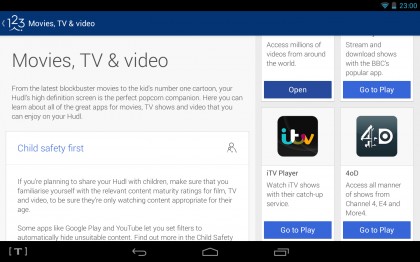
Covering such topics as 'Hudl basics,' 'Child safety,' and 'Essential apps' in a commendably straight-forward and informative manner, this is a great way to instruct first time users in the occasionally opaque ways of the Android OS.
Despite Tesco's admirably restrained decision to stay hands-off with the Android OS, that's not to say that this is a wholly smooth experience. Though it runs on an impressive-sounding 1.5GHz quad-core processor backed by an adequate 1GB of RAM, this isn't the smoothest Android experience we've had.
General navigation and web browsing is reasonable enough, but there are frequent moments when navigating through the homescreen menus or in between apps feels less smooth than it should - especially when there are other processes going on in the background.
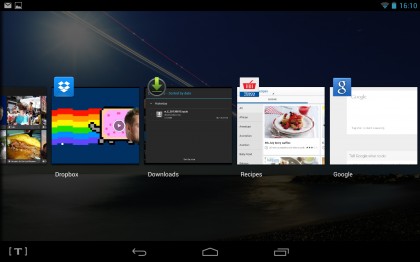
Elsewhere you get the dependable default Google keyboard with which to type in all your messages, passwords and Google searches.
It works beautifully, with an uncluttered layout and genuinely useful features like predictive word suggestions and a Swype-like system that lets you scrawl out messages without removing your finger from the screen.
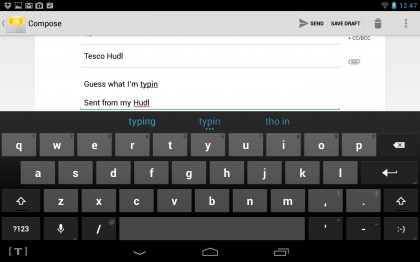
You can, of course, download Swype itself, as well as a number of alternatives, from the Google Play Store, but we didn't find it necessary during our time with the Hudl.
